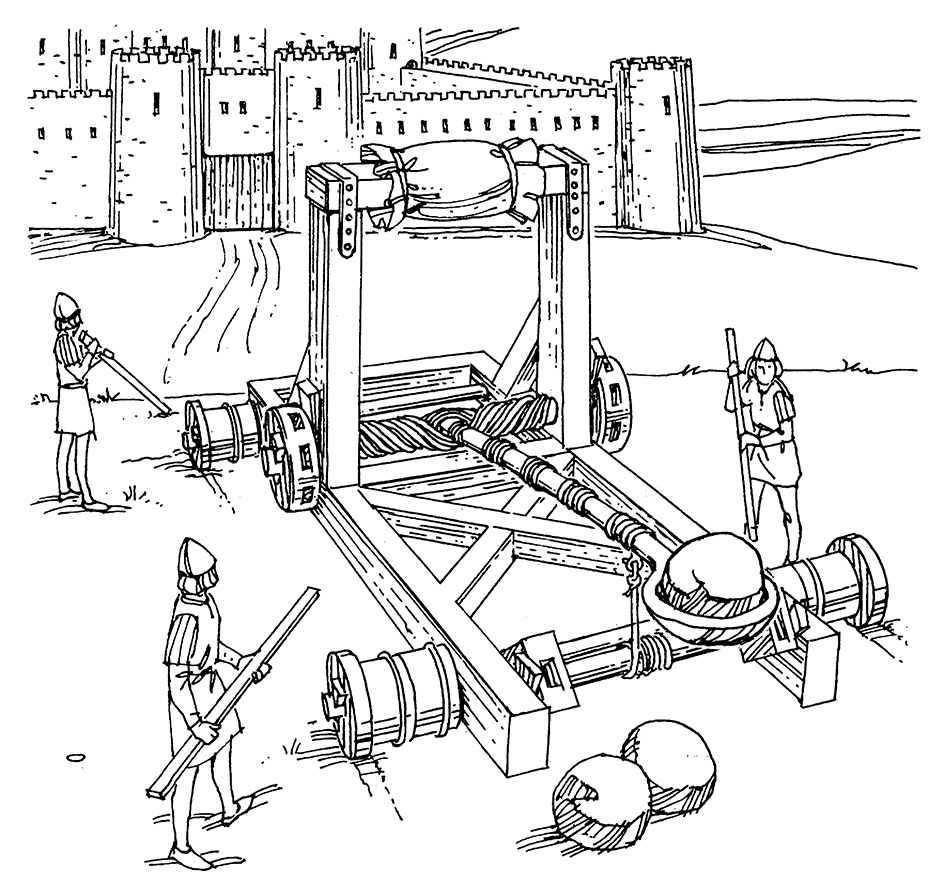Catapult, << KAT uh puhlt, >> was a war machine that shot such objects as spears or stones or hurled large weights against an enemy’s defenses. There were two main types of catapults: nontorsion and torsion. Nontorsion catapults operated like giant bows and arrows, with the shooting power coming from the release of stretched fibers. In torsion catapults, the release of a twisted rope caused a beam to spring forward, heaving heavy stones or weights.

Greek engineers built effective nontorsion catapults early in the 300’s B.C. Small nontorsion catapults that could hurl stones weighing as much as 5 pounds (2.3 kilograms) appeared about the same time. Torsion catapults, which were more powerful, were developed around 350 B.C. By A.D. 100, Roman soldiers made these catapults mobile by mounting them on carriages.
Soldiers often used catapults in attacking and defending walled cities. In the Middle Ages, castles with surrounding moats were the usual targets for catapults. Burning materials were sometimes shot from catapults, and eventually cans with gunpowder, dynamite, and poison gas were fired from them. In some cases, soldiers used young trees as catapults. They bent the trees back and loaded them with pockets containing material for bombardment. They then let the trees spring forward, releasing the loaded materials.
In modern naval warfare, a catapult is used to launch airplanes from the decks of aircraft carriers. In this type of catapult, a steam-driven piston propels the plane down the deck until the plane reaches flying speed.
